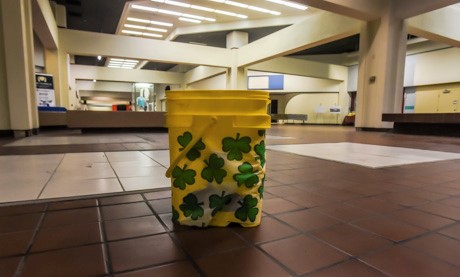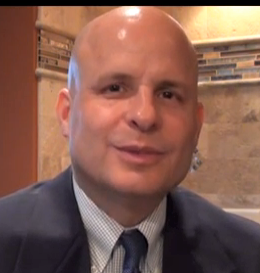City of Batavia officials are doing everything they can to rectify a dispute with O-At-Ka Milk Products over the milk processing plant’s ability to discharge its waste water into the municipality’s waste water treatment plant, City Attorney George Van Nest said Tuesday night.
The problem, however, according to Van Nest, is that no viable option currently exists to prevent the city from enforcing the “cease and desist” letter it has issued to O-At-Ka after discovering exceedingly high levels of contaminants in the waste water sent into the ponds from the Cedar Street industry.
Van Nest said the city is facing the possibility of thousands of dollars in fines levied by the New York State Department of Environmental Conservation if it doesn’t ensure that the ponds’ dissolved oxygen levels are within the required range.
O-At-Ka, as a result of the city’s action, already has incurred hundreds of thousands of dollars in increased costs by having to truck waste water away from its facility and, according to Chairman of the Board John Gould, the company will not be able to sustain that expense for much longer.
The situation was made public when Gould, a dairy farmer from Pavilion, spoke during the citizen comments portion of last night’s City Council Business Meeting.
Describing O-At-Ka as “experts in waste water handling with an excellent engineering team and excellent consultants,” Gould explained that the company handles a couple billion pounds of milk every year.
“We’re committed to sustainable waste water handling in this community,” he said. “We do that with more than words; we do it with action.”
Gould said that Upstate Niagara, a consortium of 300 farmers, owns eight plants in New York, including O-At-Ka, which employs 450 people.
Pre-Treatment Upgrades are in Sight
He advised that the company is investing $6 million to upgrade its waste water pre-treatment facility, with expectations that it will be online in December. He then talked about the hardship that the restriction has created, and called for a “collaborative solution (with) no stonewalling.”
“We need a win-win situation here. We’re committed to this city and we expect that you’re committed to us,” he said.
Gould said the company complied with the city management’s request in August to restrict its flow in order for crews to complete the air header project at the waste water treatment plant.
“The result of that was a 14-day shutdown of O-At-Ka’s discharge. We had to haul waste water away from the plant at a cost of a half million dollars for O-At-Ka,” he said. “We paid overtime for the employees so we could cut that time from 14 to 11 days. That was our commitment in August.
“In September, we were called in and, again, we’re on a restricted level of discharge to the city and it’s costing us between $20,000 to $50,000 a day, every day. We don’t take Sunday off. At the current rate, we’ll easily be spending $1 million hauling waste away from our plant that used to be accepted by the city – no problem.”
While Gould said he was “confident” that a solution could be found by sitting down with the city and the DEC, he added that O-At-Ka officials would have to “make drastic decisions” should the city “continues on this path.”
Pointed Questions to the City
“I certainly don’t want to have to furlough workers or reduce business,” he said. “I’ve got to ask, What is the city’s vision of the future here if this is the way you treat your best and largest business in the city? Where are we going? How are you going to support new business? What does the future look like to you folks?”
Gould concluded his 4 ½ minutes at the podium by saying, “I encourage you to get together with us. Let’s sit down and figure this out.”
Van Nest spent twice as long responding to Gould’s concerns, clearly articulating the city’s position that it has to do what is in the best interests of the functionality of the waste water treatment plant and – because of the financial ramifications – what is in the best interest of city taxpayers.
The soft-spoken attorney seized the opportunity to review developments stemming from the $1 million air header project that was completed in late August – well ahead of the schedule due to the deteriorating condition of the apparatus. The venture was moved up because the city had been getting numerous complaints from residents about the odors coming from the plant.
“Those complaints have been made to the city, made to EPA (Environmental Protection Agency), made to the DEC,” he said. “The city has worked very closely with its engineers, with in-house staff … to address replacement of the air header system at the ponds, so the ponds and the waste water treatment plant function properly for the community.”
Dissolved Oxygen Levels are a Problem
Speaking in technical terms, Van Nest said that dissolved oxygen levels in the ponds were decreasing as the air headers were not working to the best of their ability and as they degraded.
“At the same time, as it appears from data that the city reviewed, there were high BOD (Biochemical Oxygen Demand) loadings issued to the waste water treatment plant from O-At-Ka, which created a situation which depressed the dissolved oxygen levels that need to be in the ponds and allow them to function properly – ponds A1, A2 and A3,” he stated.
Van Nest acknowledged that O-At-Ka was asked “to cease discharging for up to a couple weeks while the one pond was taken out of service and the air header was replaced.”
“Ultimately, (the plan was) to roll back on slowly, so that the ponds and the DO recovery could take place when the air header system was ultimately turned back on to maximum ability,” he added.
Unfortunately for O-At-Ka, data collected by city staff showed that the company’s BOD and TSS (Total Suspended Solids) discharges were “well in excess” of the 300 milligram per liter level allowed through the Sewer Industrial Discharge Permit issued by the City of Batavia, Van Nest said.
As a result, the 30-acre ponds did not recover as fast as anticipated.
“They were well below the 2.0 threshold for dissolved oxygen that needs to be in place,” the city lawyer said.
DEC Issues 'Notice of Violation' to City
When the DEC realized this in late September, it sent a notice of violation to the city, looking at enforcement action through its State Pollutant Discharge Elimination System (or SPDES), Van Nest advised, “because the dissolved oxygen levels were so low and they were not going to allow the ponds to function properly pursuant to the SPDES permit.”
From that point on, many conversations have taken place – both internally and with the DEC, he said.
“There were communications with the DEC relative to that notice of violation, which is a precursor … to a potential order on consent from the DEC or EPA,” he said. “The order on consent would carry with it penalties and compliance schedules, and the penalties are significant. They could be $30,000 per day per violation for an owner of a plant that is in violation.”
Within a week, the city sent the cease and desist letter to O-At-Ka, Van Nest said, “indicating that O-At-Ka should cease discharges to the extent possible and, ultimately, completely to the plant so the dissolved oxygen levels could rebound.”
Van Nest noted that action forced O-At-Ka to truck as much as 150,000 gallons of waste water to another location, while an additional amount continues to flow to the waste water treatment plant.
“City staff and engineers are monitoring the levels – the DOD levels in the pond and the discharge levels from O-At-Ka daily, sometimes twice a day,” he advised. “Right now, the ponds have still not recovered. The DO levels are climbing somewhat, but they are not back to where they need to be from an engineering standpoint for the city’s engineers to be comfortable with the circumstance to say that the ponds have recovered.”
City Attorney: Communication Lines are Open
Van Nest disagreed with the suggestion that city leaders have not reached out to O-At-Ka officials.
“I’ve been in communication with the attorney for O-At-Ka in the last 24 hours on two occasions, The technical staff for the city has been in communication with O-At-Ka’s technical staff and engineers on several instances,” he said. “Part of the issue is that O-At-Ka and the engineers keep suggesting that there are alternative available for the city’s ponds, for the waste water treatment program at the city’s ponds to recover more quickly.”
He said one of the suggestions – bringing in portable air pumps to generate more oxygen – would possibly work except that type of equipment is not available.
“To this day, two and a half to three weeks after this issue arose, we have not heard of any of these pumps being available -- any of these pumps being located in the northeast. So that solution is not something that can be implemented at this time,” he said.
He said engineers representing the city are open to other ideas, but “at this point we don’t see anything that is currently available and implementable on the timeline that these ponds need to recover on that will, in fact, meet those requirements.”
Van Nest said he understood that the situation is affecting the bottom line for O-At-Ka, but said it is the company’s responsibility to comply with the SPDES permit’s hard-and-fast rules and regulations.
“So, with all due respect, it’s a major industrial user of the city’s waste water treatment plant. But there are obligations for pre-treatment as part of that process. And having a pre-treatment plant that can meet the capabilities of a production plant is one of those elements,” he explained.
City Taxpayers Could Pay the Price
“Ultimately, it’s the city’s plant, the city’s SPDES permit and the city’s taxpayers who are at risk if the DEC issues an order of consent with violations because the plant does not operate property (due to the DO levels). From that standpoint … the city is doing and continues to do everything it possibly can.”
Van Nest responded to questions from Council members about the projected time for the problem to be rectified but stating that he would not speculate – only deal with the situation at hand.
City Manager Rachael Tabelski said O-At-Ka’s current discharge levels are within “100 either way, up or down.”
She also noted that the bad smell coming from the plant has been alleviated.
“Since we issued the cease and desist order, we have not had very high strength waste coming through the system … that I’m aware of and the smells at the central pump station have not been strong,” she said.
Tabelski said it was her opinion that high strength waste from industrial users can cause strong odors at the plant.
She then thanked O-At-Ka for its cooperation as the city works to resolve the oxygen levels at the ponds.
“I will give O-At-Ka all the credit for all the effort you are taking in a very difficult time to haul your waste and get closer to your permitted level,” she said, looking at Gould as she spoke.
Photo at top: Milk processing at O-At-Ka Milk Products (from company website). File photo at bottom by Howard Owens: The ponds at the City of Batavia Waste Water Treatment Plant.














